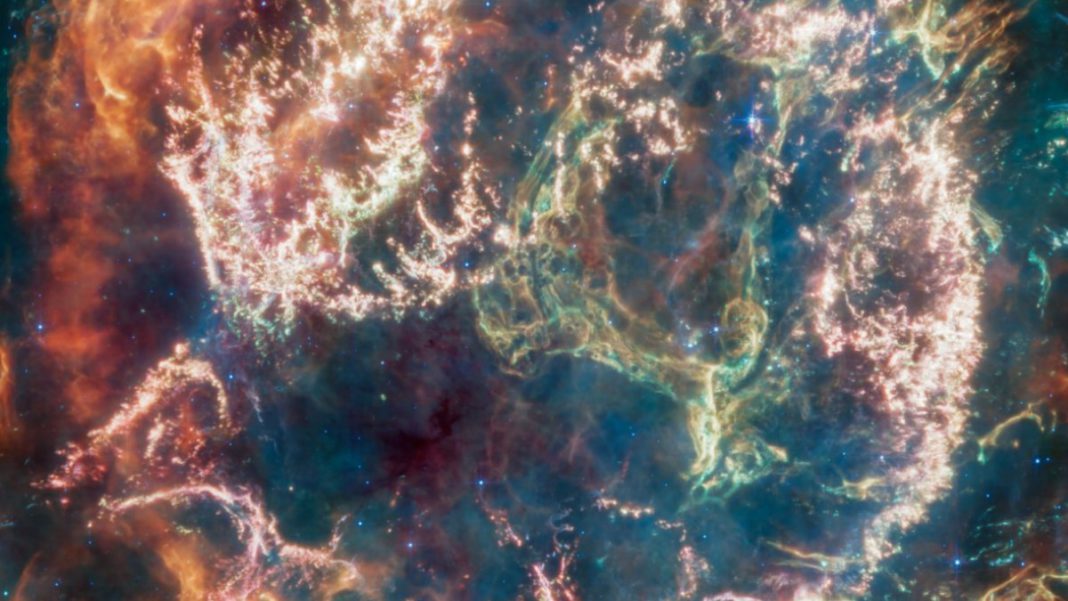UNITED STATES: Researchers have made a groundbreaking discovery using the James Webb Space Telescope (JWST), as astronomers have successfully traced an extraordinarily bright gamma-ray burst (GRB) back to its origin—a violent collision between two neutron stars.
This collision, known as a “kilonova,” produces long-duration GRBs and is believed to be the birthplace of the universe’s heaviest elements, including gold, platinum, and uranium, which do not form within the core of stars.
The process responsible for creating these heavy elements is called “neutron capture” or the r-process. It involves atomic nuclei capturing neutrons, resulting in the formation of new and heavier elements. Only extreme and violent events like the collision of neutron stars host such conditions for the r-process.
JWST has successfully detected emissions from a kilonova event for the first time and identified the signature of heavy element formation within the explosive aftermath.
The telescope captured evidence of tellurium, a heavy element, and the creation of lanthanides, a group of 15 metals heavier than lead.
In a paper detailing their findings, the research team, led by Andrew Levan from Radboud University in the Netherlands, said that the observations demonstrate that nucleosynthesis in GRBs can create r-process elements across a broad atomic mass range and play a central role in heavy element nucleosynthesis across the universe.
The GRB that led the team to the kilonova source, designated as GRB 230307A, was initially detected by NASA’s Fermi Gamma-ray Space Telescope on March 7, 2023, and stands as the second-brightest GRB ever observed.
The burst lasted approximately 34 seconds and was observed by multiple telescopes, enabling astronomers to pinpoint its source.
JWST observed the kilonova on two occasions: 29 days and 61 days after the GRB. During these observations, the fading brightness and the transition from blue to red provided significant evidence of its kilonova nature.
The research team has identified several bright galaxies near the kilonova that may host the collision of neutron stars and serve as the source of GRB 230307A.
The team’s favoured candidate is the brightest among these galaxies, located approximately 8.3 million light-years away from Earth and offset from the GRB source by around 130,000 light-years.
Additionally, the kilonova may have emitted gravitational waves, which are ripples in space-time caused by the collision of neutron stars.
While the Laser Interferometer Gravitational-Wave Observatory (LIGO) was inactive during GRB 230307A, the management recently upgraded the facility. It is now more sensitive to detect such waves.
The team’s discovery is currently undergoing peer review before publication in a journal, and an initial version of the paper is available on the research repository arXiv.
This groundbreaking observation using JWST provides valuable insights into the formation of heavy elements and further enhances our understanding of the universe’s fascinating phenomena.
Also Read: JWST Discovers Most Distant Active Supermassive Black Hole



